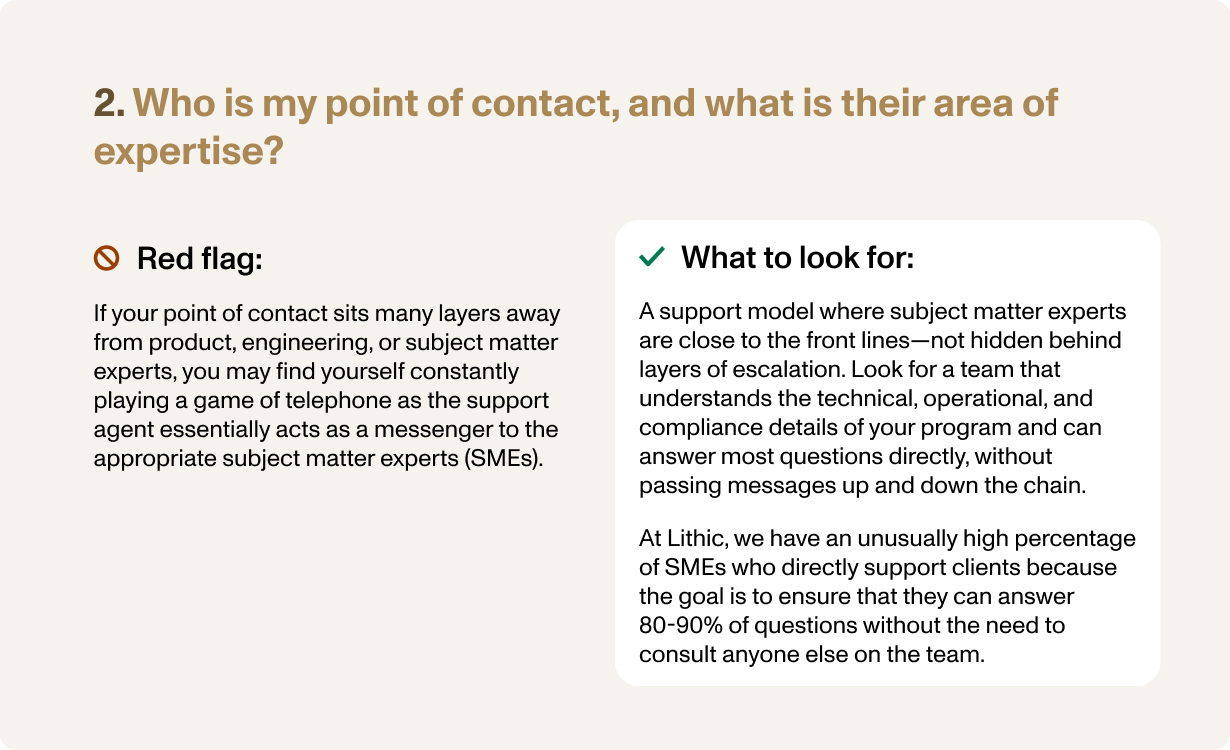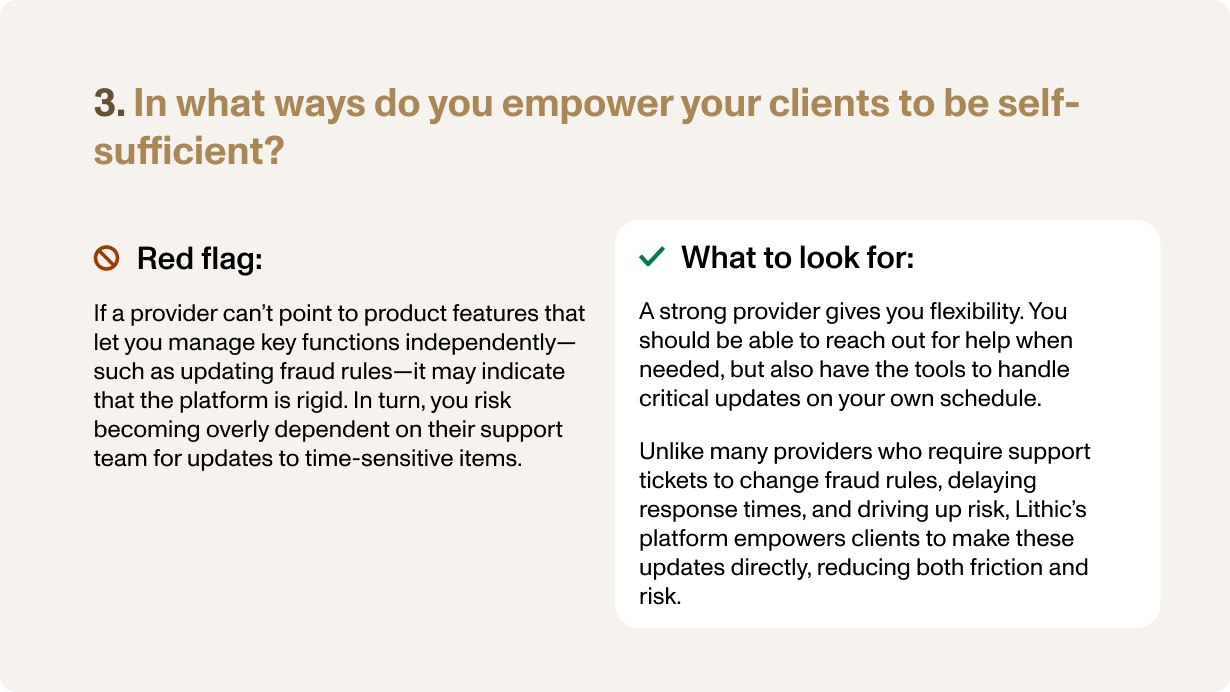Cardholder expectations have changed dramatically in recent years. With the rise of digital wallets and real-time payments, users now expect immediate access to their money and equally fast access to help when something goes wrong. When that support falls short, the consequences can be severe.
At Lithic, we see support as a critical part of the product experience. We’ve built our entire approach around the belief that great support must serve both the clients running card programs and the cardholders who rely on those programs every day. Meeting the needs of both groups means being invisible when things are running smoothly and jumping in quickly and effectively when they’re not.
In this post, I’ll share a few things that Lithic does differently to consistently maintain a 90+ CSAT (customer satisfaction) score. I’ll also share how we’ve developed our support program to meet the needs of both clients and cardholders, and provide tips on how to evaluate a program manager’s support capabilities.
How Lithic Maintains a Customer Satisfaction Score of 90+1
1. Support is everyone’s job
As companies grow, it’s easy for support teams to become siloed. At Lithic, we've worked to maintain a mindset where everyone takes on the responsibility of supporting clients, from engineers and product managers to operators and executives. In practice, this means support tickets are easily visible no matter what role you are in, and everyone is empowered to share their knowledge to resolve issues quickly and effectively.
Lithic maintains a U.S.-based customer support desk accessible through our dashboard’s ticketing system, which enables efficient issue tracking and resolution. Clients also benefit from real-time service status updates. For incidents and emergencies, we maintain 24/7/365 coverage through our comprehensive on-call system, staffed by U.S.-based engineers.
1CSAT represents customer satisfaction score for Lithic’s customers and does not include the combined CSAT scores of clients’ cardholders.
2. Cardholder conversations should feel on-brand
When we help cardholders, our goal is to sound like an extension of our client’s team. We spend a significant amount of time working closely with our clients to understand their brand, values, and preferred communication style because we know that every cardholder interaction is a reflection of their business, not ours.
That means adapting their tone and terminology. Whether a client wants a polished, formal tone or a more casual, friendly vibe, we try our best to mirror their brand voice to create a consistent and trustworthy experience for their cardholders.
This attention to detail helps to reinforce brand loyalty, reduce confusion, and ensure cardholders know they’re talking to someone who deeply understands the product and their needs.
3. We meet you where you are in your compliance journey
In the world of card issuing, it’s not uncommon for startups to be turned away by card networks or sponsor banks due to limited compliance knowledge or operational readiness. At Lithic, we tailor our support to meet each client where they are and bridge this gap, whether they’re building out a compliance program from scratch or already have a mature, well-staffed operation.
For clients still gaining familiarity with regulations like Reg E, Reg Z, and dispute management requirements, Lithic provides education and operational guidance. Additional hands-on help is available through Lithic's Program Services team, which includes cardholder support operations, customer communication templates, dispute resolution workflows, authorization rules, and recurring compliance reporting support.
For clients with more experience, Lithic takes on a more targeted role. We can support specific needs, advise on complex scenarios, or provide backup during peak periods. Rather than forcing clients into a one-size-fits-all compliance model, Lithic adjusts our level of support based on what each program requires to operate effectively and stay compliant.
How to Assess the Support Capabilities of a Card Issuing Platform
For anyone evaluating potential program managers, it’s important to dig into the support model early. These questions can help uncover how well a provider supports both the client and end cardholders.
.png)


.png)
Support Is One of Lithic’s Strengths—And It Can Be Yours Too
When launching or scaling a card program, it’s easy to focus on features, pricing, and timelines. But support—the kind that works equally well for both you and your cardholders—is what turns a good program into a great one. At Lithic, we’ve built our support model around that principle: fast answers, real expertise, and flexibility that adapts to each client’s needs.
Whether you’re evaluating providers or just rethinking your current setup, asking the right questions about support can save a lot of frustration and ultimately build trust with your customers.

